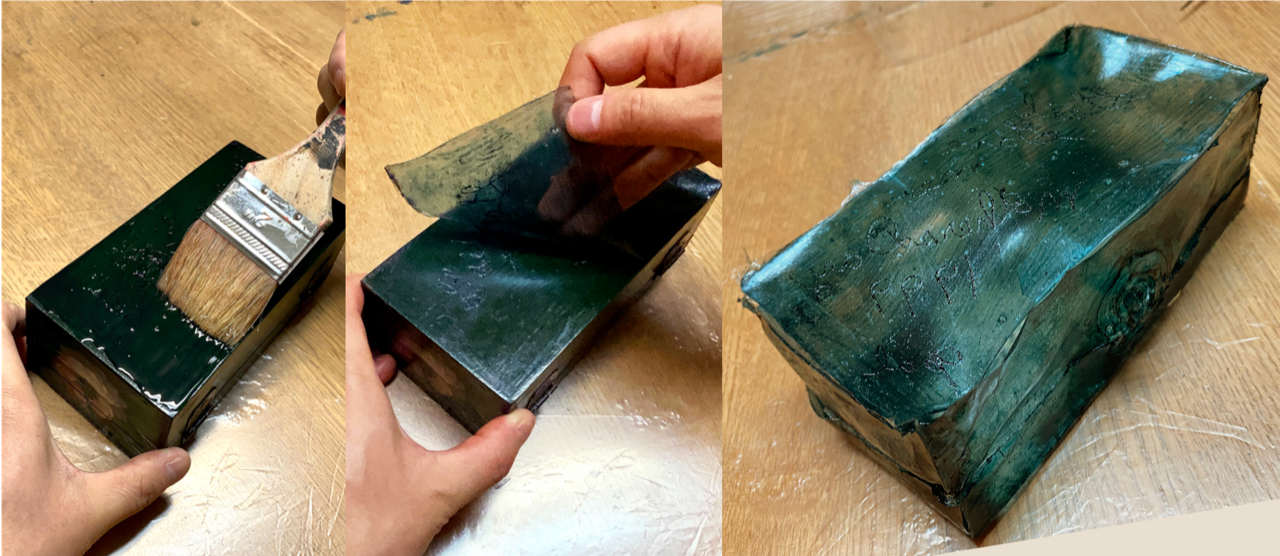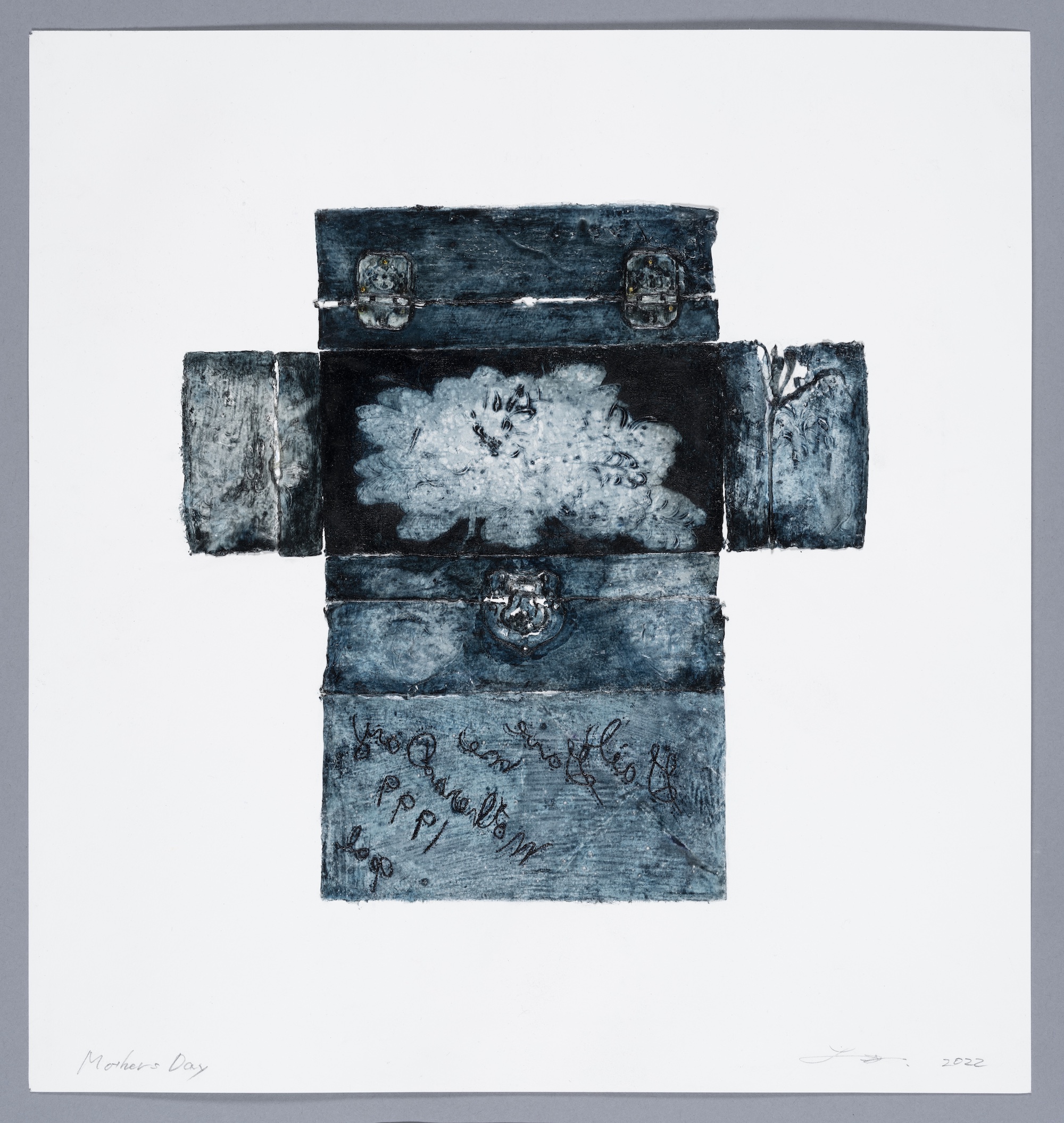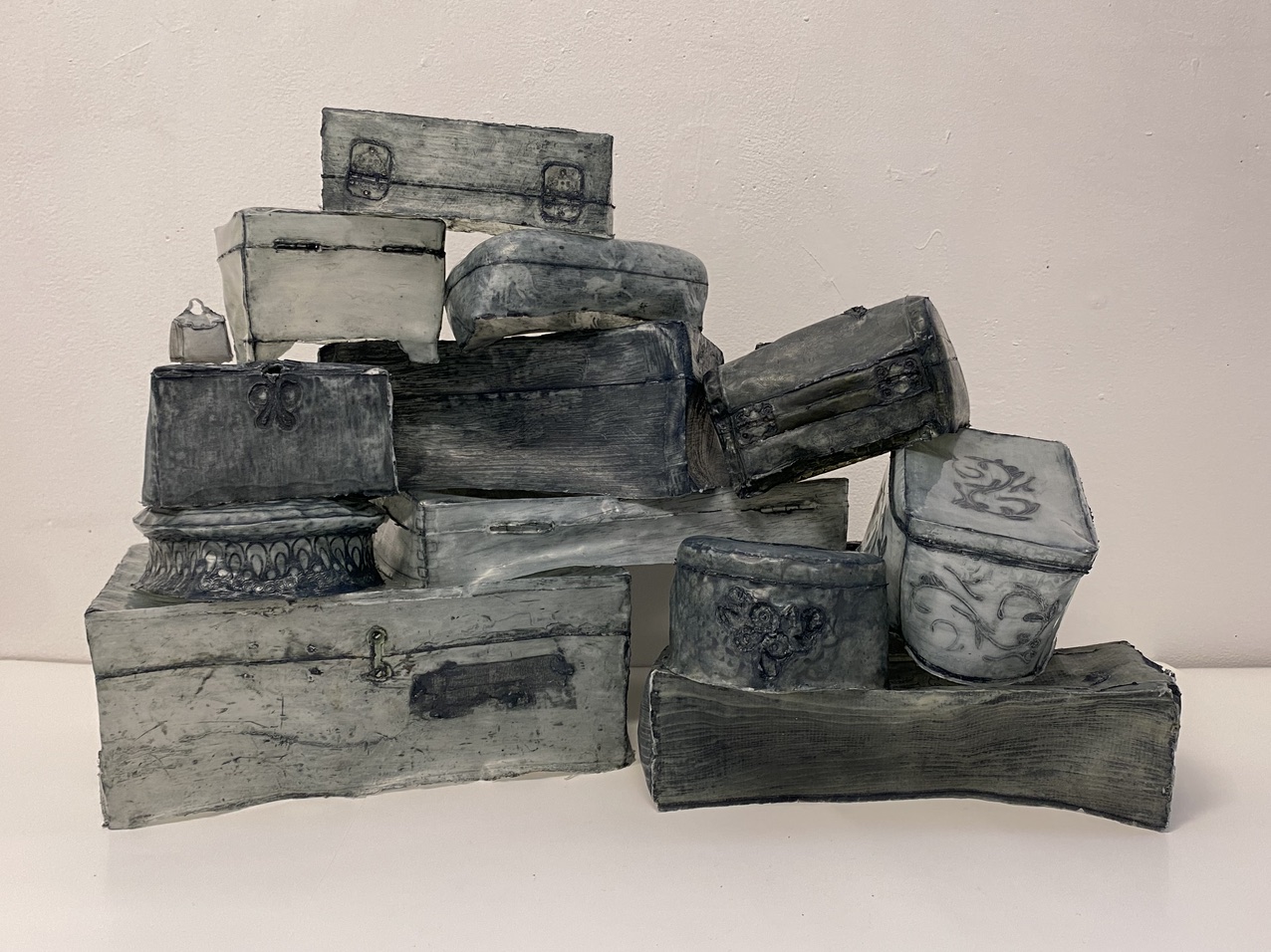Art in Focus: “Mother’s Day” by Takeshi Takano
During the fall of 2021, Japanese artist Takeshi Takano was a visiting artist in the Department of Art and Design at the University of Alberta where he shared his unique approach to printmaking. Using architectural and 3D forms as the source of his art, Takano covers the surface of these structures with a blue ink/glue mixture that is applied in layers. Once dried, the film is peeled off and pressed onto paper. For larger, collaborative architectural projects, the blue peel is sometimes stitched and hoisted up on scaffolding that mimics the original structure.1 In every project, the surface texture of the film is captured and later reconstituted through the blue peel. This entire ‘peel process’ is completed without the use of conventional printmaking presses.
In the monoprint Mother’s Day (2022.4.1), Takano takes a personal approach to his blue peel process. The source object for the work is a wooden jewelry box he found upon his arrival to Edmonton at a local thrift shop. Carved on the bottom of the box is a dedication that reads: “Gail gave me Mothers Day 1999 - Opal.” In addition to capturing the dedication text through the peel print, the two-dimensional work also captures the metal hinges and the floral design on the original box. Moreover, the print’s hue is meant to remind viewers of the technical and architectural nature of historic blueprint drawings.

For Takano, one of the most important aspects of his work is how surface plays in his image production. This means that he is focused on the outer aspect of things; how it can sometimes differ from the essence or interior nature of the work. “The surface peeled away from the object serves as a kind of archive,” writes Takano, “preserving the history of the object's materiality.”2
In many ways, this process eliminates the need of the printing plate as the surface texture is captured through a peel rather than making an embedded image on a matrix and printing it through a press. Ultimately, the surface in Takano’s work is much more unstable and open to a variety of material changes in the process of its making. Overall, the work is informed by the concept of “relational aesthetics”, a term coined by curator Nicolas Bourriaud to describe when the art is informed by human relationships and their social contexts.3 In Mother’s Day, the sentiments of maternal love along with the dedication and found nature of the monoprint provides a critical understanding of how we acknowledge relationships and at times, cast away objects of this symbolism in North America.
In his public lecture at the university, Takano describes the various projects he embarked upon during his time in Edmonton, including his peel print process. Mother’s Day was donated by the artist to the University of Alberta Museums Art Collection as a work representative of his time in the City of Edmonton. A participant in numerous festivals and exhibitions, Takeshi Takano currently lives and works in Japan.
1 Some of these larger works have been made in collaboration with fellow artist Abe Daisuke.
2 Email conversation with the Artist. 27 July 2022.
3 https://www.tate.org.uk/art/art-terms/r/relational-aesthetics
This web story is part of the University of Alberta Museums Art Collection Spotlight Series, a collection of web stories aimed to share works of art from the University of Alberta Museums Art Collection with the world. Posted monthly, these stories connect works of art in the Collection to important matters on our campus and in our world.

